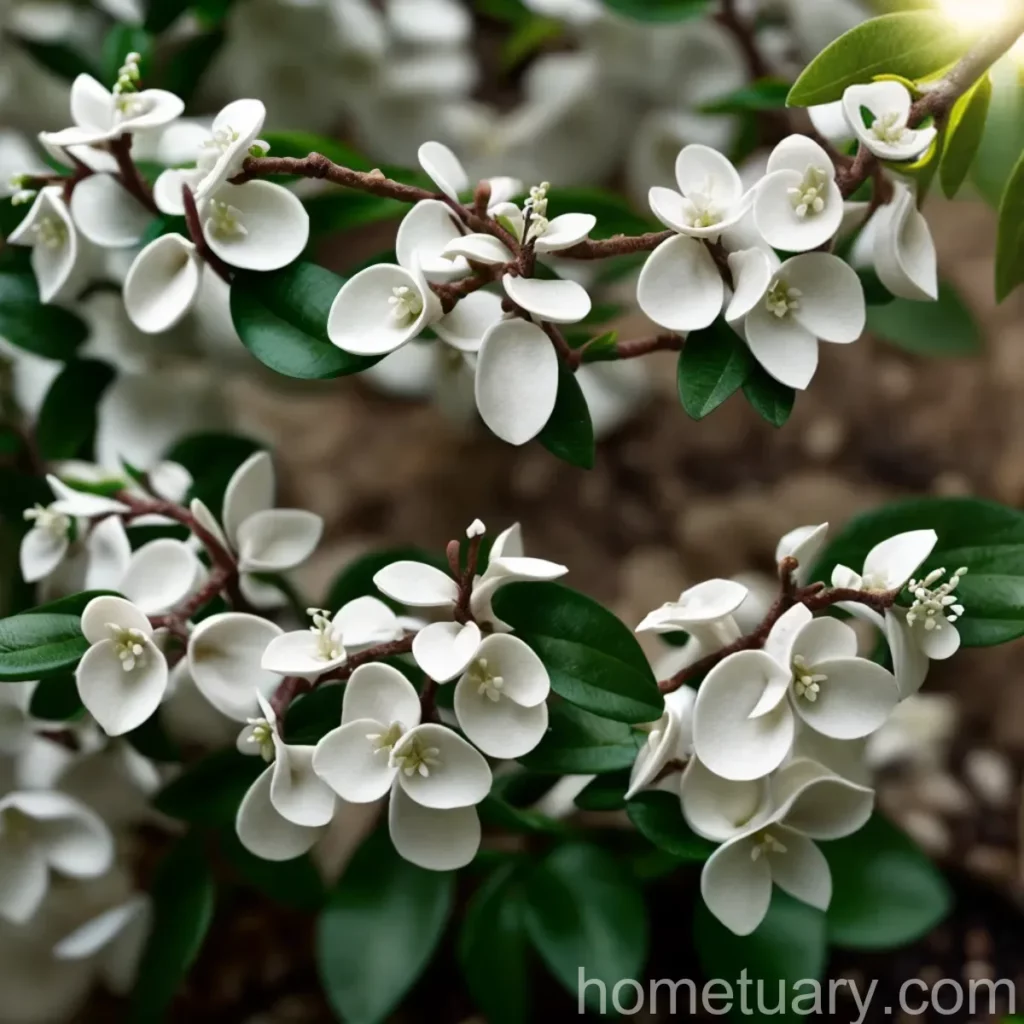Planting the Pearlbush (Exochorda racemosa)
Exochorda racemosa, commonly known as Pearlbush, is a stunning deciduous shrub that belongs to the family Rosaceae. Native to China and the Himalayas, this plant is characterized by its arching branches adorned with delicate and beautiful white flowers. It is a popular ornamental plant in gardens and landscapes, appreciated for its vibrant blooms and its adaptability to various growing conditions.
In this comprehensive guide, we will delve into the various aspects of Pearlbush cultivation, including its cultural requirements, uses, maintenance tips, and common diseases and pests. By the end of this blog post, you will have a thorough understanding of how to grow and care for Exochorda racemosa, enabling you to cultivate a thriving and visually appealing garden or landscape.
What is Pearlbush (Exochorda racemosa)?
Exochorda racemosa, commonly known as Pearlbush, is a deciduous flowering shrub that is prized for its exquisite display of white flowers. It typically reaches a height of 6 to 10 feet, with a similar spread, creating an impressive presence in the landscape. The plant blooms in spring, producing cascading clusters of white flowers that resemble strings of pearls, hence its common name, Pearlbush.
The ornamental value of Pearlbush extends beyond its flowering season, as its green foliage provides an attractive backdrop in the garden. The leaves are ovate and serrated, adding texture and visual interest to the plant. As autumn approaches, the foliage transitions to vibrant hues of yellow and red, offering a final burst of color before the onset of winter.
Additionally, Pearlbush is valued for its arching growth habit, which contributes to its graceful and elegant appearance. Given its ability to thrive in a range of environmental conditions, Exochorda racemosa is a versatile and sought-after plant for landscaping and ornamental purposes.
Key Takeaways – Pearlbush (Exochorda racemosa)
Before delving into the specific details of Pearlbush care and cultivation, let’s outline the key takeaways associated with this exquisite plant. Understanding these fundamental aspects will serve as a foundation for successfully nurturing Exochorda racemosa in your garden or landscape.
Culture
- Hardiness: Pearlbush is well-suited to USDA hardiness zones 4-7, where it can thrive in cooler climates.
- Growth Rate: The plant exhibits a moderate growth rate, allowing for steady development and expansion in the landscape.
- Lifespan: With proper care, Exochorda racemosa can have a lifespan of several decades, providing long-term ornamental value.
Uses
- Ornamental Appeal: The stunning white flowers and attractive foliage make Pearlbush a valuable ornamental addition to gardens, parks, and landscapes.
- Privacy Screening: Due to its arching growth habit and dense foliage, Pearlbush can serve as an effective privacy screen or hedge.
Water
- Watering Needs: While Pearlbush is tolerant of drought conditions once established, regular watering is essential, particularly during periods of heat and dryness.
Sunlight
- Sun Exposure: Exochorda racemosa thrives in full sun to partial shade, making it adaptable to a variety of light conditions.
Fertilizer
- Nutrient Requirements: Fertilize Pearlbush in early spring with a balanced, slow-release fertilizer to support healthy growth and abundant flowering.
- Application: Apply the fertilizer evenly around the base of the plant and water thoroughly to facilitate nutrient absorption.
Soil
- Soil Type: Pearlbush prefers well-draining, loamy soils, but it can adapt to various soil types, provided they are not waterlogged.
- Soil pH: The ideal soil pH for Pearlbush cultivation is slightly acidic to neutral (pH 6.0-7.0).
Pruning
- Pruning Time: Perform light pruning immediately after the flowering period to maintain the desired shape and promote healthy growth.
- Deadheading: Removing spent flowers can encourage the development of new buds and prolong the flowering season.
Propagation
- Methods: Pearlbush can be propagated through softwood cuttings, hardwood cuttings, or by division.
- Timing: Propagation is most successful when conducted in early summer or early autumn.
Container Popularity
- Container Growth: Exochorda racemosa can be cultivated in containers, offering a versatile option for smaller gardens or patio spaces.
Common Diseases
- Disease Susceptibility: Pearlbush is relatively resistant to diseases, with proper care minimizing the risk of infections.
Disease Diagnosis
- Symptom Recognition: Familiarize yourself with common signs of plant diseases, such as leaf spots, wilting, or abnormal discoloration, to promptly address any issues affecting your Pearlbush.
Common Pests
- Pest Resilience: Pearlbush is generally resilient to pest infestations, although occasional monitoring for aphids, scale insects, or caterpillars is advisable.
Botanist’s Tips
- Selecting Varieties: Consider the diverse cultivars of Exochorda racemosa, such as ‘The Bride’ or ‘Snow Day Surprise,’ to introduce unique features and characteristics to your garden.
- Companion Planting: Pair Pearlbush with other complementary plants to enhance its visual impact and create harmonious garden compositions.
Fun Facts
- The genus name “Exochorda” is derived from the Greek words “exo,” meaning outside, and “chorda,” meaning cord, alluding to the position of the seeds on the ovary.
- Pearlbush is known for its attractive exfoliating bark, adding to its visual appeal during the winter months.
Now that we have established an overview of Pearlbush and its key attributes, let’s explore each aspect in greater detail to gain a comprehensive understanding of how to care for and cultivate this remarkable plant.
Links to External Resources
Missouri Botanical Garden – Exochorda racemosa
North Carolina State University Extension – Growing Pearlbush (Exochorda racemosa)
Royal Horticultural Society – Exochorda racemosa ‘The Bride’
University of Florida IFAS Extension – Pearlbush for Central Florida
The American Horticultural Society – Pearlbush
The Connecticut Agricultural Experiment Station – Landscape Plant Fact Sheet – Pearlbush















